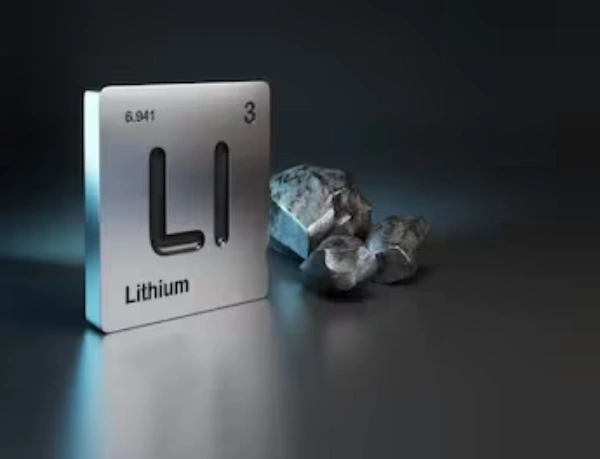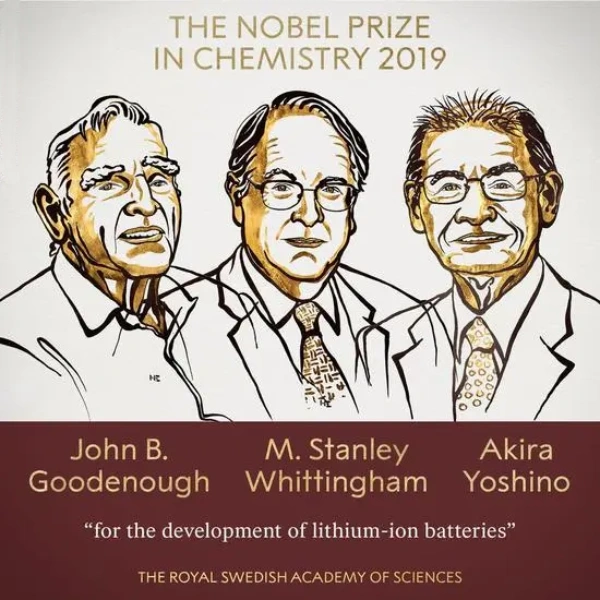
A lithium-ion battery is a device that converts chemical energy into electrical energy. Lithium-ion batteries are an essential part of modern electronics. Lithium-ion batteries have evolved into a diverse market for a wide range of devices and applications as technology advances.

Part 1. Research and development of lithium-ion battery materials
In 1970, M.S. Whittingham used titanium sulfide as the anode material and metallic lithium as the cathode material to create the first lithium battery. The anode material of lithium batteries is usually manganese dioxide or thionyl chloride. The cathode is lithium. This kind of battery has voltage after assembly and does not need to be charged.
Li-ion batteries are developed from lithium batteries. For example, the button batteries used in cameras in the past were lithium batteries. This kind of battery can also be recharged, but its cycle performance is not good. Lithium crystals are easily formed during the charge and discharge cycle, causing an internal short circuit in the battery. Therefore, charging this kind of battery is generally prohibited.
In 1982, R.R. Agarwal and J.R. Selman of the Illinois Institute of Technology discovered that lithium ions have the property of being embedded in graphite. This process is rapid and reversible. At the same time, the safety risks of lithium batteries made of metallic lithium have attracted much attention. Therefore, people try to use the characteristics of lithium ions embedded in graphite to make rechargeable batteries. The first usable lithium-ion graphite electrode was successfully trial-produced by Bell Laboratories.
In 1983, M. Thackeray, J. Goodenough, and others discovered that manganese spinel is an excellent cathode material. This material is low-cost, stable, and has excellent electrical and lithium conductivity properties. Its decomposition temperature is high, and its oxidizing property is much lower than lithium cobalt oxide. Even if there is a short circuit or overcharge, the danger of burning or explosion can be avoided.
Part 2. Lithium-ion battery research and development
In 1985, Sony devoted itself to researching and developing lithium-ion batteries.
In 1987, “the era of mobile phones is coming,” mobile phone batteries using nickel-chromium batteries needed to be charged once a day. And the battery volume accounts for half of the phone.
In 1988, Sony applied for the first lithium battery patent and named the new product Li-ion battery. Although Sony’s cooperation in applying for the patent was similar to Goodenough’s earlier paper, Goodenough did not pursue it.
In 1989, A.Manthiram and J.Goodenough discovered that cathodes using polymeric anions would produce higher voltages.
In 1990, the old rival of lithium-ion batteries, nickel-metal hydride batteries, came online. Nickel metal hydride batteries are mostly standard AA and AA batteries. The cycle life of nickel-metal hydride batteries with 50% DOD is not as good as the 100% DOD life of lithium-ion batteries. The energy density of nickel metal hydride is inherently lower than that of lithium batteries, and the DOD is even less than half. In addition to high-rate charge and discharge, nickel-metal hydride batteries are inferior to lithium-ion batteries.
In 1990, the industry leader in lead-acid batteries appeared.
In 1991, after six years of research and development, Sony’s first lithium-ion battery product was launched.
In 1992, Japan’s Sony Corporation invented a lithium battery using carbon material as the cathode and lithium-containing compounds as the anode. During the charge and discharge process, no metallic lithium exists, only lithium ions. This is a lithium-ion battery. Later, lithium-ion batteries revolutionized consumer electronics. This type of battery, which uses lithium cobalt oxide as the cathode material, is still the main power source for portable electronic devices.
In 1994, lithium-ion batteries became available to the public. Lithium-ion batteries initially existed only in Sony’s products. But this deadlock was broken by Dell in 1994. Dell laptops start using lithium-ion batteries.
In 1995, lithium-ion batteries eliminated shape restrictions, and Sanyo launched the aluminum-cased lithium-ion battery 103450.
In 1995, one million lithium-ion batteries were burned in the Sony Koriyama project fire. Therefore, the safety issue of lithium-ion batteries has been put on the agenda.
Part 3. Lithium battery application
In 1996, Padhi and Goodenough discovered phosphates with an olivine structure, such as lithium iron phosphate (LiFePO4). It is safer than traditional cathode materials, is particularly resistant to high temperatures, and its overcharge resistance far exceeds that of traditional lithium-ion battery materials. Therefore, it has become the current mainstream cathode material for power lithium batteries with high current discharge.
In 1996, lithium iron phosphate was successfully developed. Goodenough again made a splash by proposing the commercialization of lithium iron phosphate.
In 1997, Japan’s first lithium-ion battery pure electric vehicle, Prairie JoyEV, was produced.
In 1998, Academician Chen Liquan, the father of China’s lithium battery, built the first production line using a complete set of Chinese equipment.
In 1999, eight Japanese companies led by Panasonic launched their first polylithium products. It is called the first year of polymer lithium-ion batteries by the Japanese.
In 1999, South Korea entered the lithium-ion battery market, and LG Chem completed South Korea’s first battery product.
In 2000, BYD won an order from Moto. In the past, BYD took only three years to rank first in the world in its cadmium-nickel battery business. In 2000, it invested heavily in lithium battery research and development and received an order from Motorola.
In 2004, graphene was successfully developed.
In 2004, CATL became an iPod supplier.
In 2004, China’s lithium battery industry emerged. China’s annual output of lithium-ion batteries is 800 million units, accounting for 38% of the global share, second only to Japan.
In 2006, BYD launched its first electric car, the F3e. Due to insufficient policies and inadequate charging facilities, F3e was not put on the market. In the 2006 Sony battery safety incident, a Dell laptop caught fire at an international conference. Sony spent $440 million to recall 10 million batteries.
In 2008, China, Japan, and South Korea were divided into three parts. With the rise of Korean companies such as LG and Samsung, the international lithium battery market is divided into three parts: Japan, South Korea, and Korea.
In 2011, China’s megawatt energy storage stations were connected to the grid. In the field of energy storage, lithium-ion batteries have an application stage in addition to electric vehicles. This is also the world’s first-megawatt energy storage station using lithium iron phosphate as the cathode.
In 2012, the Tesla Model S was launched.
In 2012, 4.35 V lithium cobalt oxide products were launched.
In 2012, Panasonic’s high energy density 18650 battery took the lead. Relying on using NCA materials, Panasonic has mass-produced conventional voltage batteries with the highest energy density, 18650-3400mAh.
According to data from the National Bureau of Statistics, by 2013, China’s annual output of lithium-ion batteries had approached 4.768 billion, becoming an important battery producer worldwide.
In 2014, drone production exploded. Global sales of civilian drones reached 390,000, a year-on-year increase of 50%. The broad applications of drones drive the sales of drone batteries.
In 2016, Sony sold its battery division. Due to Panasonic’s dominance of the high-end passenger car battery market and the cost war between LG, Samsung, and Chinese manufacturers, Sony’s battery division, which has been losing money continuously, has no hope of turning around, so it resold the battery division to Murata Manufacturing.
In 2017, the price of lithium cobalt oxide skyrocketed.
In 2017, the 94-year-old Goodnough, the father of lithium batteries, came out again and led the team to develop solid-state batteries. After completing 1,200 cycles, it can be tried at 20-60 degrees, triggering a revolution in the lithium battery industry.
In 2018, hydrogen fuel cells impacted the lithium battery market.
In 2019, three people who contributed significantly to lithium ions won the Nobel Prize in Chemistry.
In 2020, BYD officially releases blade battery
In 2021, Mercedes-Benz announced the use of lithium iron phosphate batteries
In 2022, the overall global lithium-ion battery shipments will be 957.7GWh, a year-on-year increase of 70.3%. China’s lithium-ion battery shipments reached 660.8GWh, a year-on-year increase of 97.7%, exceeding the global average growth rate, and accounting for 69.0% of the total global lithium-ion battery shipments.
In 2023, global lithium battery shipments will be 1,192Gwh, a year-on-year increase of 24.9%. It is expected to exceed 1,500GWh in 2024. It is expected that the world will reach 6331GWh in 2030, with an average annual compound growth rate of 26.9% from 2023 to 2030, and global lithium battery shipments will maintain rapid growth. Global lithium battery shipments will maintain rapid growth from 2023 to 2030, mainly because automotive power batteries and energy storage batteries, which account for a large proportion of lithium batteries, will maintain rapid growth.

Part 4. Final thoughts
Throughout the history of battery development, we can see three characteristics of the current development of the world’s battery industry. First, green and environmentally friendly batteries are developing rapidly, including lithium-ion batteries, nickel-hydrogen batteries, etc. The second is the transformation from primary to storage batteries, which aligns with the sustainable development strategy. Third, batteries are further developing in small, light, and thin directions.
Among commercial rechargeable batteries, lithium-ion batteries have the highest specific energy. In particular, polymer lithium-ion batteries can make rechargeable batteries thinner. Precisely because lithium-ion batteries have high volume-specific and mass-specific energy, are rechargeable and non-polluting, and have the three major characteristics of the current development of the battery industry, they are growing rapidly in developed countries.
The development of telecommunications and information markets, especially the extensive use of mobile phones and laptops, has brought market opportunities to lithium-ion batteries. Among lithium-ion batteries, polymer lithium-ion batteries will gradually replace liquid electrolyte lithium-ion batteries and become the mainstream of lithium-ion batteries due to their unique advantages in safety. Polymer lithium-ion batteries are known as the “batteries of the 21st century”. They will open up a new era of batteries with very optimistic development prospects.
Part 5. FAQs
-
Are lithium batteries environmentally friendly?
Lithium batteries are generally considered environmentally friendly due to their higher energy efficiency, longer lifespan, and lower greenhouse gas emissions than traditional battery chemistries. -
What about the cost of lithium batteries?
The cost of lithium batteries can vary depending on factors such as battery capacity, chemistry, and market demand. Technological advances and increased production have led to a gradual decrease in cost over the years. -
What is the price of lithium batteries?
The price of lithium batteries varies depending on factors such as battery capacity, brand, and supplier. It is best to check with specific manufacturers or retailers for current pricing information. -
Are lithium batteries rechargeable?
Yes, lithium batteries are rechargeable. They are commonly used in various applications, including portable electronics, electric vehicles (EVs), and renewable energy storage systems, where their rechargeability is a key advantage.
Related Tags:
More Articles
Overview of Deep Cycle Lithium Battery
In this article, we explore the life, voltage, capacity, and charging considerations of deep cycle lithium batteries.
How Long do Lithium Batteries Last?
How long do lithium batteries last? we will explore the factors that influence the lifespan of lithium batteries and provide insights into their longevity.
How to Choose the Best LiFePO4 Battery?
Choose LiFePO4 batteries for superior performance, safety, and versatility in EVs, UPS, and backup power. This guide helps you make informed decisions.
Get 12v Lithium Car Battery As a Power Source for the Ride
Make the right choice for your vehicle's battery needs by installing a 12 volt lithium car battery. You will enjoy maintenance-free longevity with this change.



